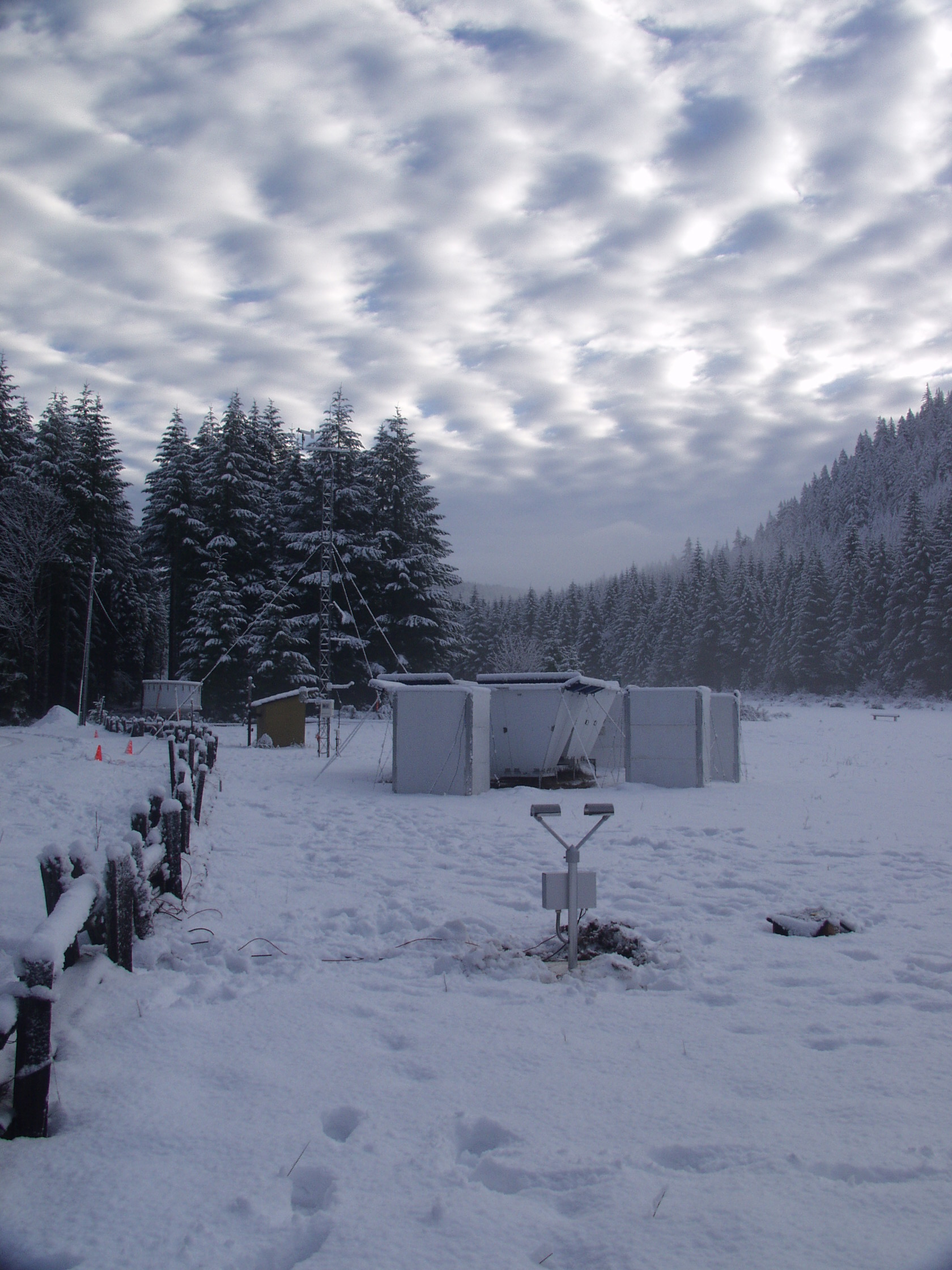Temperature Measurement
- Instructions
- Notes
Pressure, Humidity, and Precipitation
- Instructions
Weather State Analysis
- Instructions
- Notes
Wind Measurement
- Instructions
- Notes
Pressure, Humidity, and Precipitation Laboratory
1. Objectives
The objectives of this lab are to familiarize you with a few of the ways in which three common meteorological variables (pressure, humidity and precipitation amount) are measured, and to assess the errors implicit in the measurements. The primary focus of the laboratory exercises is the calibration of the specific devices used by your Davis weather station to determine these variables.
 |
2. Humidity 2.1: The humidity sensor is the Davis module is a reasonably accurate capacitance transducer. However, it is of limited utility because it can only give the indoor relative humidity (RH). Nevertheless, by assuming that the mixing ratio is the same both inside and outside of the building, and by measuring the RH inside and the temperatures (T) outside and inside, we can use the inside RH to estimate the outside RH. Part of the lab will be to assess the validity of this assumption. What might cause this assumption to be invalid? 2.2: Specific tasks
|
3. Precipitation
The Davis gauge is designed to measure increments of 0.01 inches of rainfall. It would therefore be wise to work in inches in this case and convert to millimeters in your analysis because the digitization works better on the Davis using inches.
3.1: Calibrate your Davis tipping bucket rain gauge by determining the volume that each bucket of the gauge holds. You can do this by using a pipette apparatus and slowly pouring a certain amount of water into each bucket until it tips. Try at least 3 trials in each of the two buckets so that you can calculate simple statistics. Also measure the radius of the collection funnel for use in later calculations.
3.2: For the Davis tipping bucket gauge, determine the relationship between rain rate and measurement error. Do this by pouring measured volumes of water per unit time into the gauge. Use at least four different pouring rates. The lowest rate should be equivalent to ~10 mm hr-1 and the rates should be separated by at least a factor of two. Without making a mess, try using a syringe to simulate rain at a very high rate to determine if the Davis gauge would see a tropical downpour.
3.3: Calibrate the standard weather service 8-inch weather service gauge by pouring in various measured volumes of water and then using the gauge “dip stick” to measure the water volume in the gauge. Generate at least six calibration points and analyze the data for bias and uncertainty of the weather service gauge (i.e., use linear regression analysis).
4. Questions to address in the lab report
4.1: From 2.1, you can calculate the mean and standard deviation of your bucket volumes. Assuming a normal distribution, a value within three standard deviations has almost 100% probability of occurrence. Using this information, deduce the lowest amount of rain (in millimeters) measurable for each bucket of the Davis rain gauge.
4.2: What is the error in the Davis tipping bucket gauge as a function of rain rate? You will need to convert the volume of water that you measured in a given time into equivalent millimeters per hour. Do this with knowledge of the collection area of the funnel. Use a linear regression to determine the functional relationship between rain rate and observed depth from the Davis.
5.3: Convert the data gathered in task 2.3 to millimeters. Utilize the data with a linear regression to derive the calibration curve for the 8-inch weather service rain gauge in the form:
DTRUE = (a ± Sa)DOBS + (b ± Sb)
where DTRUE is the true depth inferred from your volumetric measurements and DOBS is the observed, Davis depth. Comment on the zero and gain biases. Also find the total error of the predicted truth by using the error formula

and taking a mean observed depth from the weather service rain gauge in evaluating the first term on the right. Assume that the measured water from the graduated cylinder is completely accurate for the purpose of this calculation.